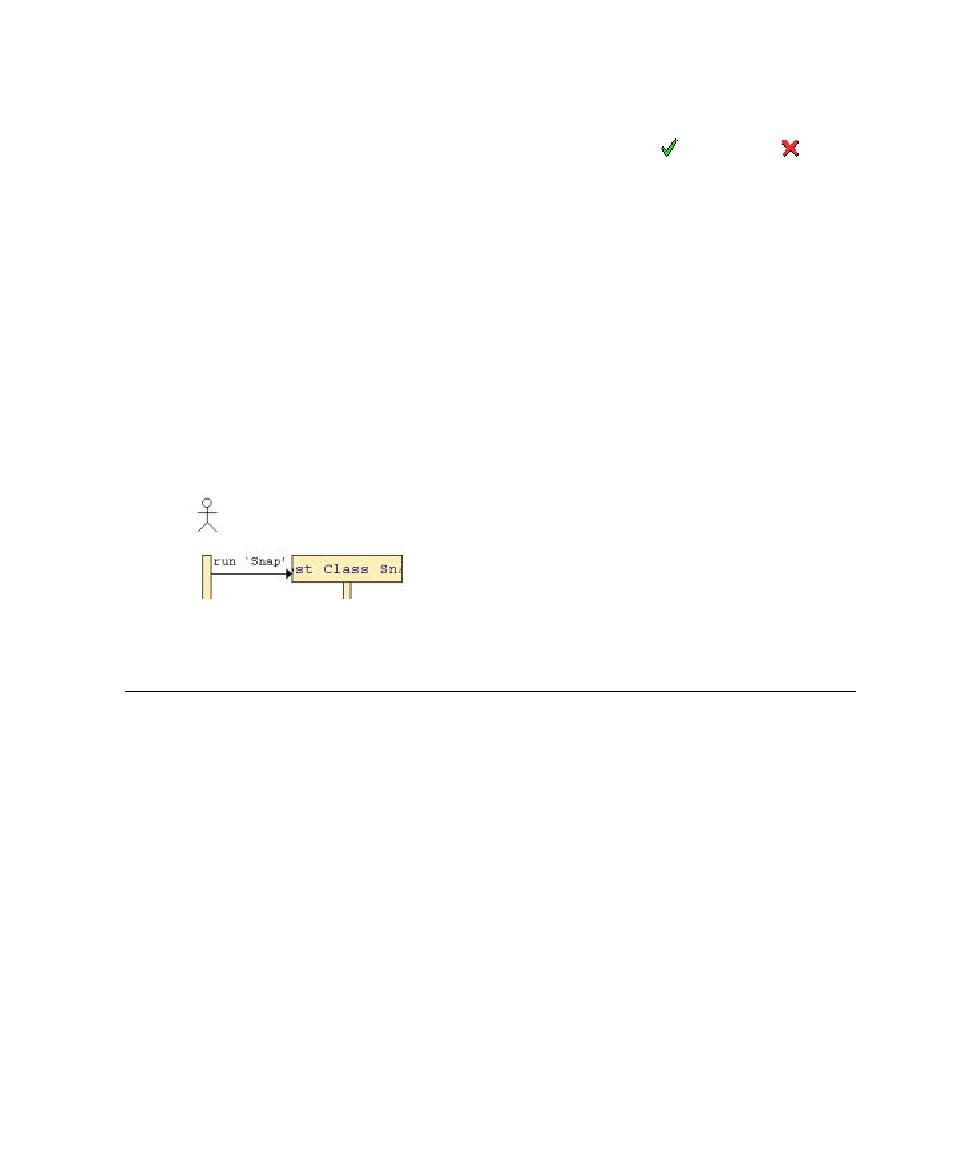
System Testing for C
Test RealTime - User Guide
Checks
JUnit
assert
and
verify
primitives are displayed as Passed (" ") or Failed (" ")
glyphs attached to the instances.
You can click any of these glyphs to highlight the corresponding statement in the
Text Editor window.
Exceptions
Component Testing for Java generates UNEXPECTED EXCEPTION Notes whenever
an unexpected exception is encountered.
Comments
Calls to
verifyLogMessage
generate a white note, attached to the corresponding
instance.
Messages
Messages can represent either a run or a call statement as shown below:
System Testing for C
Test RealTime's System Testing feature is the first commercial automated feature
dedicated to testing message-based applications. Until now most of the projects
developing real-time, embedded or distributed systems spent a fair amount of
resources building dedicated test beds. Project managers can now save time and
money by avoiding this costly, non-core-business activity.
System Testing helps you solve complex testing issues related to system interaction,
concurrency, and time and fault tolerance by addressing the functional, robustness,
load, performance and regression testing phases from small, single threads or tasks
up to very large, distributed systems.
With Test RealTime's System Testing feature, test engineers can easily design, code
and execute virtual testers that represent unavailable portions of the system under
test - SUT - and its environment.
System Testing is recommended for testing:
·
Telecommunication and networking equipment using standard protocols
190
